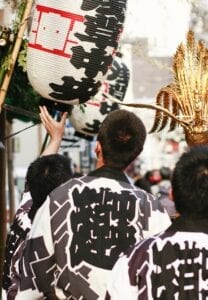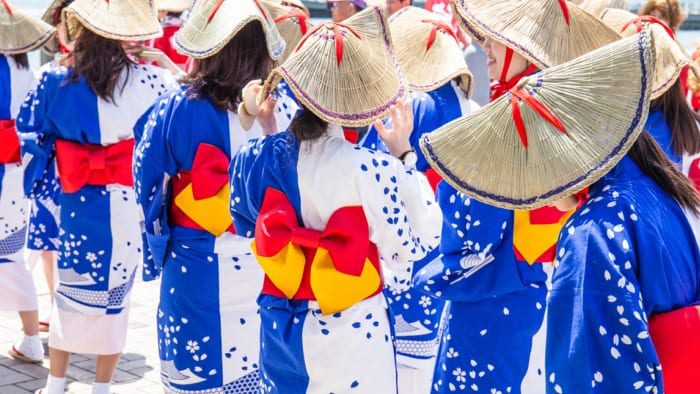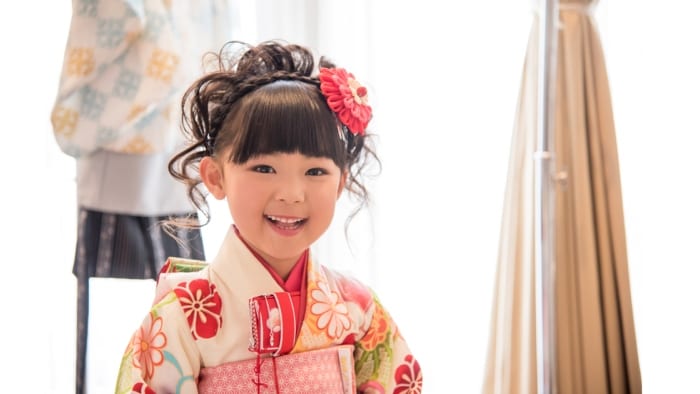Happi Coats are traditional short, wide-sleeved overcoats worn by workers in Japan. Like many other garments in Japanese culture, they are wrapped around the body like a robe, but they only extend to the waist or hip, distinguishing them from kimonos. Happi coats have their roots in the traditional haori, which itself has influences from historical Chinese fashion. These coats are regarded as uniforms and are adorned with symbols representing different associations. Soldiers used to wear happi coats displaying the colors and symbols of their associated leaders, while workers would wear them decorated with symbols representing their industry or group. They often boast bright colors, bold designs, and occasionally feature a family crest.
Originally, happi coats were exclusively worn by men, but during the Edo period (1603-1868), as Japan experienced economic growth and a flourishing artistic scene, women also started wearing them. The happi coat transitioned from being a mere uniform to becoming a fashion statement. Nowadays, these distinctive coats are most commonly seen during festivals and are still worn by workers in traditional Japanese establishments like sushi houses. Moreover, their simple yet elegant design has influenced the fashion world, leading to various variants of happi coats being used as informal clothing and lounge robes around the globe. They are perfect for adding a touch of color to your outfit while keeping you warm on a chilly day!




